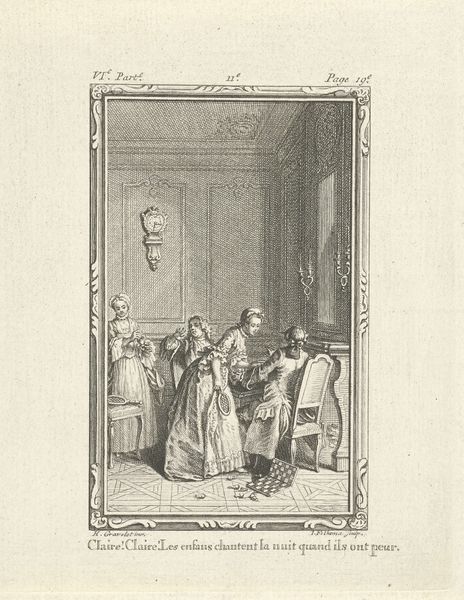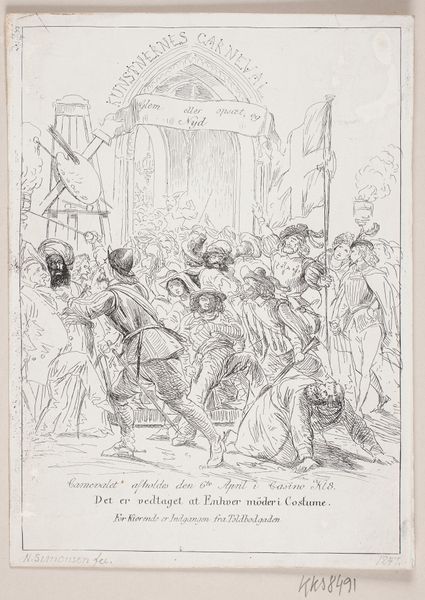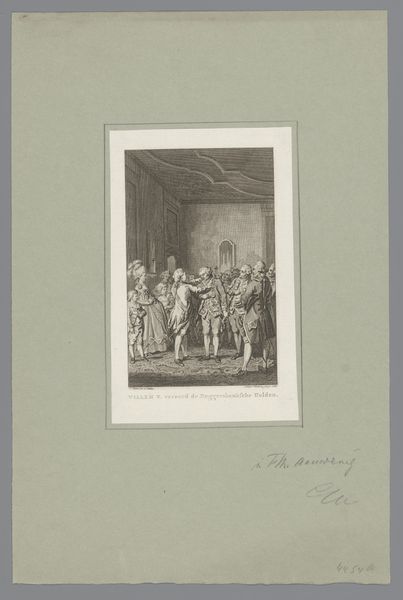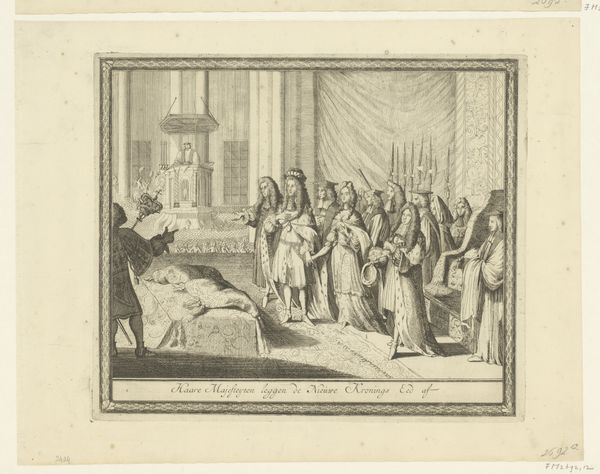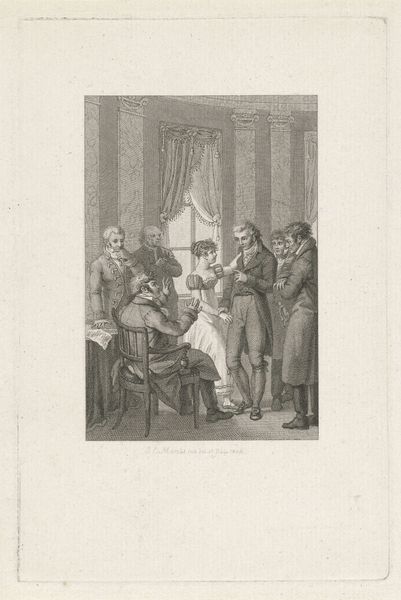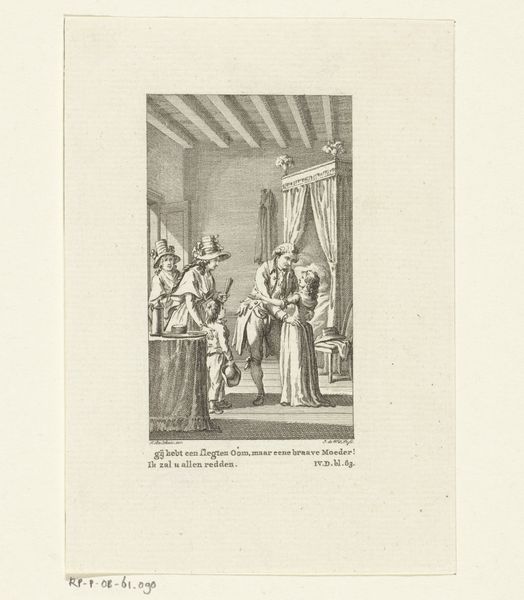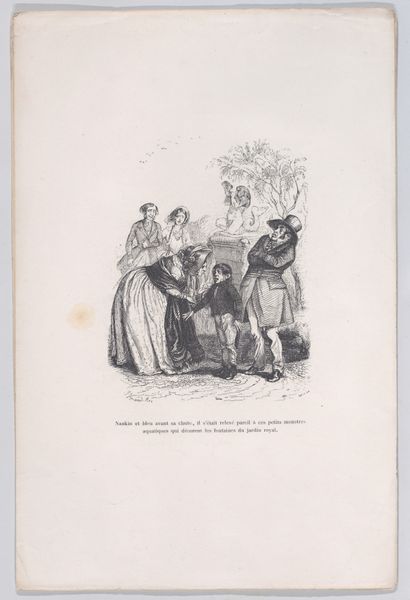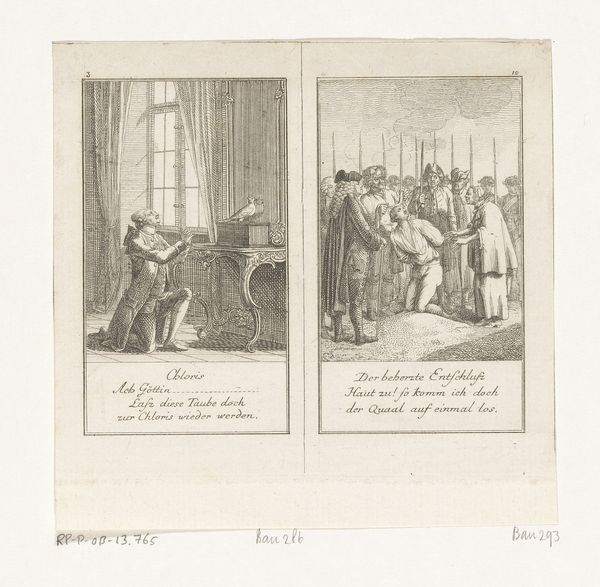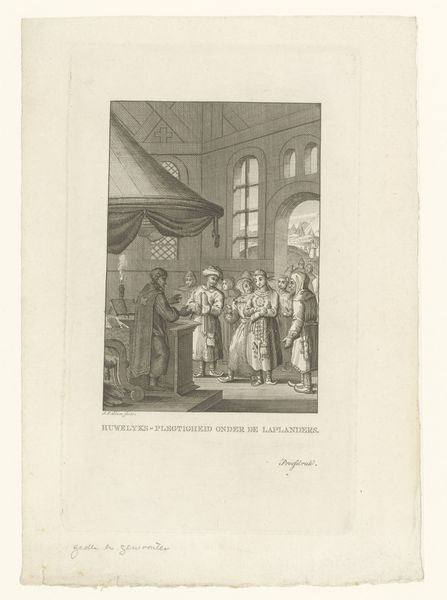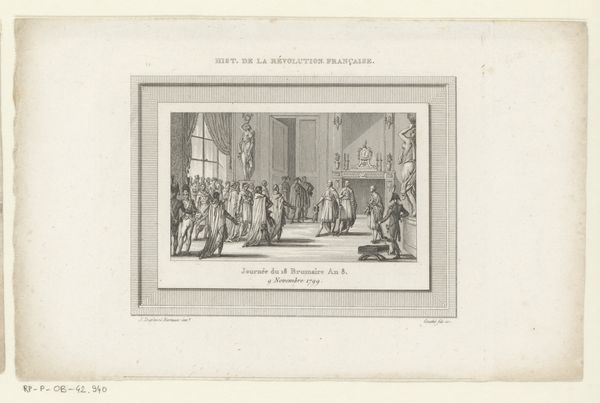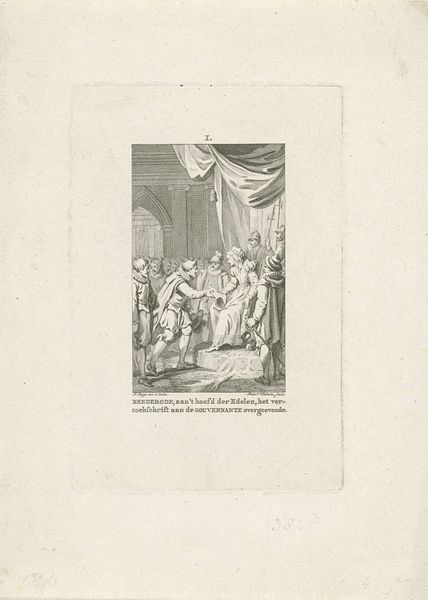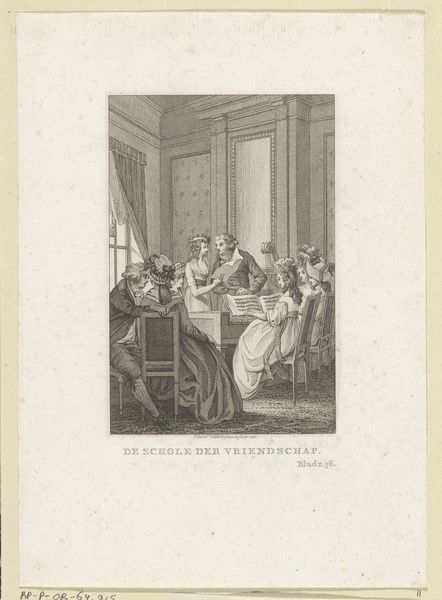
Koning Frans I van Frankrijk ontvangt een diplomatieke delegatie 1821
0:00
0:00
georgesrouget
Rijksmuseum
drawing, print, paper, ink, pencil, engraving
#
portrait
#
drawing
#
neoclacissism
#
narrative-art
# print
#
figuration
#
paper
#
ink
#
classicism
#
pencil
#
history-painting
#
engraving
Dimensions: height 273 mm, width 182 mm
Copyright: Rijks Museum: Open Domain
Curator: Georges Rouget’s “King Francis I of France Receiving a Diplomatic Delegation," created in 1821, offers a compelling study in Neoclassical history painting, rendered meticulously in ink, pencil, and engraving on paper. What strikes you first about it? Editor: The linear precision gives it a cool, almost austere feel. The architectural setting seems to dominate, reducing the figures to carefully positioned components within the overall composition. You hardly notice all the detail! Curator: Exactly! Rouget emphasizes clarity of form and line, characteristic of Neoclassical art, doesn’t he? Note the use of strong, receding lines of perspective to create depth, framed by these grand architectural details. What do you see in terms of materials and process? Editor: Well, it's fascinating to consider how Rouget utilized the reproductive nature of engraving to disseminate this vision of French history. The very act of reproducing the image makes it available to broader audiences, subtly impacting public perception. Think of the role this type of printmaking played in shaping national identity! Curator: Interesting. I was focused on the almost theatrical presentation here. The central placement of Francis I upon the raised dais, the reactions in the assembly all lend a performative gravitas. I see a very clear visual rhetoric. Editor: And the labor inherent in this type of printmaking must not be discounted. The transfer of image, the engraving and printing involved—it is physical, exacting work! Each impression carries the marks of labor that adds another dimension to the reception. Curator: A worthy point. So, what do you make of it, in toto? Editor: Considering its reproductive nature alongside its artistic value emphasizes the political dimensions of images circulated within a society, particularly concerning royalty, politics, and material history. Curator: I concur that Rouget’s strategic use of formal elements, and engraving for reproduction, amplify the sense of historical importance of this moment in French history—a grand presentation meant for the eyes of many. A fascinating work!
Comments
No comments
Be the first to comment and join the conversation on the ultimate creative platform.
